Når det gjelder ski, finnes det to hovedstiler: Nordisk (langrenn) og Alpint (utforkjøring). Her er en rask oversikt:
- Alpint handler om fart i bratte bakker. Du tar heisen opp fjellet, låser støvlene tett til kortere, bredere ski, og skjærer deg ned preparerte løyper.
- Nordisk ski fokuserer på utholdenhet, med en spark-og-glid-bevegelse for å bevege seg over flatt eller kupert terreng. Med lengre, lettere ski og frikoblingsbindinger er det perfekt for å utforske snødekte landskap.
Utstyret og opplevelsen er veldig forskjellige. Alpint gir deg adrenalinet fra nedfarter, mens nordisk tilbyr en jevn, aktiv reise. Og hvis du er ute etter noe nytt, kombinerer produkter som Snowfeet* elementer fra begge stiler, med kortere, lette ski som fungerer med vanlige vintersko for mer fleksible skiopplevelser.
Rask oppsummering:
- Alpint: Raskt, nedoverbakke, heistilgang, tyngre utstyr.
- Nordisk ski: Utholdenhetsfokusert, selvframdrift, lettere utstyr.
- Snowfeet*: Et kompakt, enklere alternativ som blander elementer fra begge.
Klar for å velge ditt neste vintereventyr? La oss dykke dypere inn i detaljene.
Hva er forskjellen mellom alpint og nordisk? - The Winter Sport Xpert
Nordisk vs Alpint: Hva er forskjellen?
Å forstå forskjellene mellom nordisk og alpint hjelper med å fremheve den unike appellen til hver stil. Disse to stilene ble utviklet med ulike mål for øye, og tilbyr distinkte opplevelser for snøentusiaster.
Alpint forklart
Alpint er den klassiske utforidretten de fleste tenker på når de tenker på ski. Det innebærer å ta en stolheis eller gondol til toppen av et fjell og deretter kjøre ned preparerte løyper. Skisteder som Aspen eller Park City er kjent for denne stilen, hvor fokuset er på fart, presisjon og å skjære kraftfulle svinger ned bratt terreng.
I alpint er støvlene dine fastlåst i skiene, noe som skaper en solid forbindelse som sikrer at bevegelsene dine overføres direkte til skiene. Denne oppsettet tillater presise svinger og trygge nedfarter i høy fart. Skiene er kortere og bredere sammenlignet med nordiske ski, med metalldeler som griper godt i hardpakket snø og is.
Løypene blir nøye vedlikeholdt av skianlegg, og tilbyr alternativer for alle ferdighetsnivåer - fra milde nybegynnerløyper til bratte, utfordrende nedfarter hvor tyngdekraften står i sentrum.
Forklaring av nordisk ski
Nordisk ski, eller langrenn, er en helt annen opplevelse. I stedet for å stole på stolheiser eller tyngdekraft, driver du deg selv over flatt eller lett kupert terreng. Tenk på det som å bytte ut spenningen ved nedoverspeed med gleden av en jevn, aktiv reise gjennom snødekte landskap.
Nordiske ski er designet med effektivitet i fokus. De er lengre, smalere og lettere enn alpine ski, noe som gjør dem ideelle for å gli over variert terreng. I motsetning til alpint løfter hælen seg naturlig med hvert steg, noe som skaper en gålignende bevegelse. Støvlene er lette og fleksible - mer som joggesko enn de stive støvlene som brukes til alpint.
Det finnes to hovedstiler innen nordisk ski. Klassisk langrenn bruker parallelle spor med et festeområde under foten for å gi grep, mens skøyting innebærer en diagonal bevegelse på preparerte flater. Begge stilene legger vekt på utholdenhet, rytme og muligheten til å utforske vinterlandskap i eget tempo.
Hovedforskjeller mellom Nordic og Alpine
Opplevelsene som tilbys av disse to stilene kunne ikke vært mer forskjellige. Alpint handler om adrenalin, presisjon og spenningen ved å suse nedover. Nordisk, derimot, er en utholdenhetsaktivitet som lar deg nyte reisen over variert terreng.
Denne forskjellen gjenspeiles også i utstyret. Alpint utstyr er laget for stabilitet og beskyttelse under raske nedfarter på preparerte løyper, mens nordisk utstyr er designet for effektivitet og komfort over lange distanser.
Men hva om du kunne kombinere det beste fra begge verdener? Det er her Snowfeet* kommer inn. Deres NORDIC Cross-country Skate Skis og WALKSKI Backcountry Touring Skis tilbyr en unik vri. Disse skiene fungerer med dine vanlige vintersko og presterer godt under ulike forhold - fra snødekte stier til preparerte løyper. Med en lengde på bare 35–39 tommer, kombinerer de kontrollen fra alpint med utholdenheten fra nordisk, og gir deg et allsidig alternativ for vintereventyr.
Utstyrsammenligning: Nordic vs Alpine vs Snowfeet*
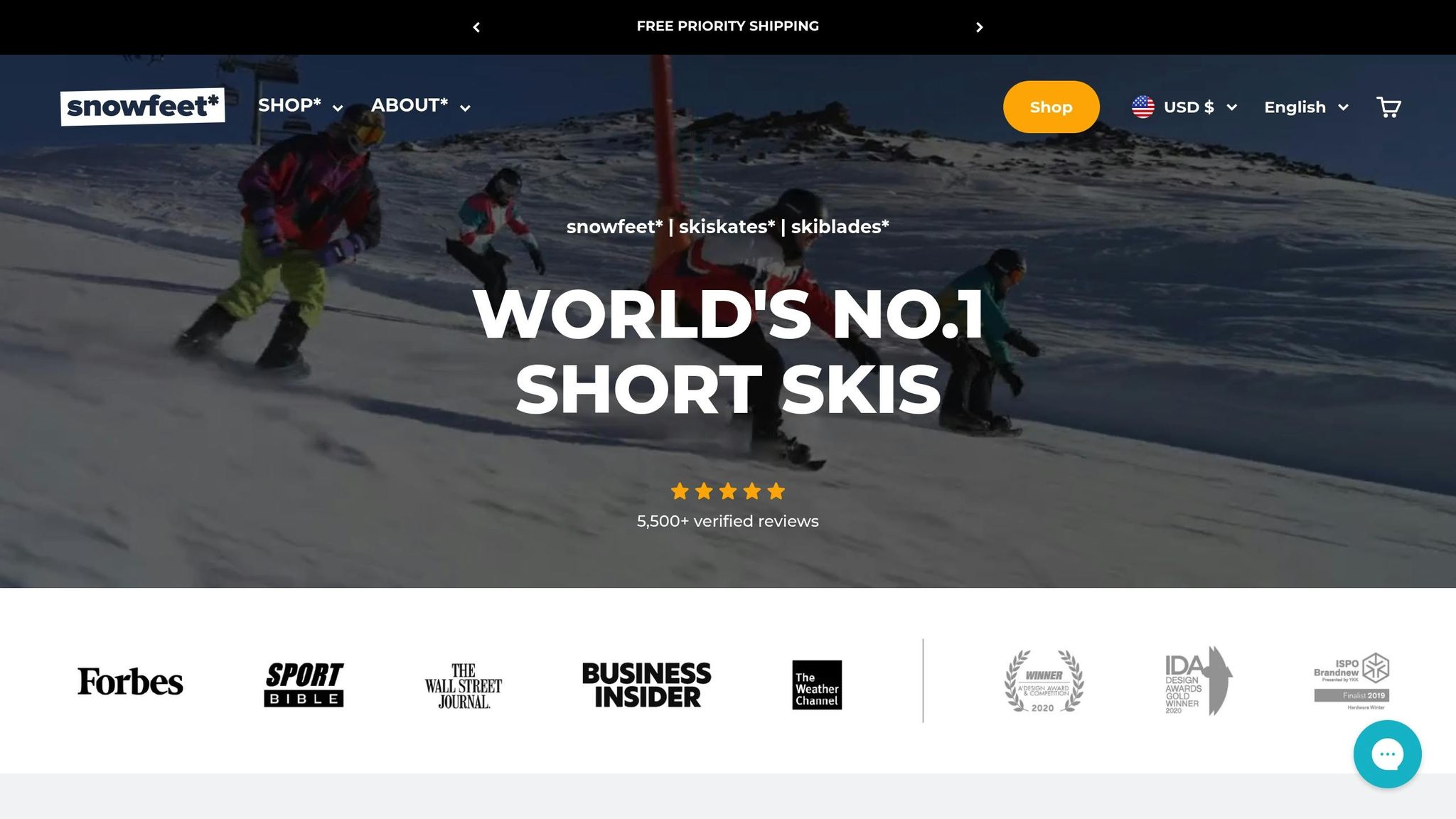
Ditt valg av utstyr kan gjøre eller ødelegge vinteropplevelsen din. Tradisjonelle oppsett som alpint og langrenn krever store investeringer og har spesifikke begrensninger. Men det finnes et tredje alternativ som ryster opp: Snowfeet*.
Alpinutstyr
Hvis du liker alpint, må du være forberedt på å bruke mye på spesialisert utstyr. Alpinski er tunge, måler 5-6 fot lange og veier 8-12 pund per par. De er laget for fart og presisjon i preparerte bakker.
Støvlene er den vanskeligste delen. Laget av stiv plast, veier de opptil 8 pund per par og koster mellom 200 og 800 dollar. Disse støvlene er laget for å overføre hver minste bevegelse til skiene, men de er beryktet for å være ukomfortable å gå med og krever perfekt passform for å unngå fotsmerter under lange dager i bakken.
Så har du bindingene som fester støvlene både ved tå og hæl. Denne faste forbindelsen gir god kontroll i nedoverbakke, men begrenser skiene til bruk i alpinanlegg. Legg til skistaver (4-5 fot lange), og du har et oppsett som koster 1000-2000 dollar og tar mye plass i bilen.
Langrennsutstyr
Langrenn tar en lettere og mer effektiv tilnærming. Langrennsski er lengre og smalere enn alpinski, måler 6-7 fot og veier bare 3-4 pund per par. De er designet for utholdenhet og fungerer godt på flatt eller lett kupert terreng.
Langrennstøvler ligner mer på tursko – lette, fleksible og mye mer komfortable. De veier 2-3 pund per par og koster mellom 100 og 300 dollar. De er imidlertid kun kompatible med langrennsbindinger, så du er bundet til dette spesifikke oppsettet.
Bindingene festes kun ved tåen, noe som lar hælen løfte seg naturlig når du går. Dette gjør langrenn ideelt for turløyper, men det passer ikke for bratte bakker. Langrennstaver er lengre enn alpinstaver (omtrent brysthøyde) og viktige for å drive deg fremover.
Fordeler med Snowfeet* utstyr
Snowfeet* endrer spillet ved å kombinere det beste fra Alpine og Nordic utstyr. Deres NORDIC Cross-country Skate Skis er bare 35 tommer lange og veier 4,4 pund per par. De er kompakte, bærbare og enkle å håndtere.
En stor fordel? Snowfeet* fungerer med dine vanlige vinter- eller snowboardstøvler, så du slipper å bruke penger på spesialisert fottøy. Du kan ta på deg Snowfeet* og komme deg ut i snøen uten ekstra utstyr.
For mer allsidighet presterer WALKSKI Backcountry Touring Skis (39 tommer) godt på preparerte løyper, i fjellet eller til og med i hagen din. De er små nok til å få plass i en ryggsekk og koster under 300 dollar, noe som gjør dem til et budsjettvennlig alternativ til tradisjonelle oppsett.
Snowfeet* bindinger er en annen fremtredende funksjon. De er designet for å fungere med ulike typer støvler, fra tursko til snowboardstøvler. Dette betyr at du kan dele dem med venner eller familiemedlemmer, uansett skostørrelse.
Utstyrsammenligningsskjema
Her er en rask oversikt over hvordan disse alternativene sammenlignes:
| Funksjon | Alpint | Langrenn | Snowfeet* |
|---|---|---|---|
| Skilengde | 5-6 fot | 6-7 fot | 35-39 tommer |
| Vekt | 8-12 lbs/par | 3-4 lbs/par | 4,4 lbs/par |
| Støvelkostnad | $200-$800 | $100-$300 | Bruk dine egne støvler |
| Total oppsettkostnad | $1,000-$2,000 | $400-$800 | Under $300 |
| Bærbarhet | Takstativ nødvendig | Vanskelig å transportere | Passer i ryggsekk |
| Allsidighet | Preparerede bakker | Preparerede løyper | Alle snødekte terreng |
| Læringskurve | Bratt | Moderat | Mild |
| Støvelkomfort | Dårlig for å gå | Flott for å gå | Dine komfortable støvler |
Denne sammenligningen viser hvorfor Snowfeet* får stadig flere tilhengere blant vintersportentusiaster. Mens alpint og langrenn utstyr utmerker seg under spesifikke forhold, kan de være dyre, klumpete og begrenset i bruk. Snowfeet* tilbyr et fleksibelt, rimelig og bærbart alternativ som åpner vintermoro for flere.
Skiteknikker og hvor du kan gå på ski
Nå som vi har gått gjennom forskjellene i utstyr, la oss dykke inn i hvordan hver skistil fungerer og hvor du kan nyte dem. Måten du glir over snøen på – og terrenget du takler – avhenger helt av teknikken du velger. Alpint og langrenn kan føles som to helt forskjellige verdener, men Snowfeet* bygger bro, og tilbyr en frisk tilnærming som fungerer med begge.
Hvordan stå på alpinski
Alpint handler om kontrollerte nedfarter på preparerte løyper. For å skjære de jevne svingene, vil du flytte vekten mellom skiene mens du holder dem parallelle. Nøkkelen er å lene seg inn i svingene, bruke kantene på skiene for å gripe snøen, og styre farten ved å justere kroppsstillingen og formen på svingene.
Et kjennetegn ved alpint er avhengigheten av stolheiser for å nå toppen av bakkene. Det betyr at du er bundet til skianleggets infrastruktur, åpningstider og værforhold. Den stive forbindelsen mellom støvler og ski gir deg presis kontroll, noe som gjør det perfekt for høyhastighets carving. Tradisjonelle alpine ski er designet for stabilitet i hastigheter på 30-40 mph, men de passer best for preparerte løyper. På den annen side gir Snowfeet* en ny vri ved å håndtere både nedoverbakke og flatt terreng, og gir deg mer frihet til å utforske.
Hvordan gå på langrenn
Langrenn tar en helt annen tilnærming – det handler om selvframdrift over flatt eller lett kupert terreng. Den klassiske teknikken, kalt diagonalgang, etterligner gange. Du skyver fra med en ski mens du glir fremover på den andre, og bruker staver for å holde rytmen.
Hvis du er ute etter mer fart, er skøyteteknikken tingen. Lik is-skøyting skyver du fra i en vinkel med hver ski mens du bruker staver for ekstra kraft. Denne stilen er ideell for preparerte langrennsløyper og kan få deg til å bevege deg overraskende raskt på flatt underlag.
Langrenn åpner opp tilgang til mil med løyper, ofte med start rett i din lokale park eller til og med i hagen din. Det lette, fleksible utstyret er designet for lange turer – noen skiløpere dekker 10-20 miles på en enkelt tur, noe du rett og slett ikke kan gjøre med alpint utstyr. Men det frie hælbinding-systemet som gjør langrenn så allsidig på flatt terreng, kan gjøre bratte nedkjøringer litt utfordrende.
Snowfeet* fungerer overalt
Snowfeet* tar det beste fra begge verdener, og blander alpine og nordiske teknikker samtidig som det gir deg friheten til å gå på ski nesten hvor som helst. NORDIC Cross-country Skate Skis er perfekte for skøyting på flatt terreng, og deres kortere lengde på 35 tommer gjør dem mye enklere å manøvrere sammenlignet med tradisjonelle nordiske ski.
På milde bakker lar Snowfeet* deg nyte kontrollerte alpinstil-svinger, selv i lavere hastigheter. Det sikre bindingssystemet fungerer med dine vanlige vintersko, og den kortere lengden gjør det mindre skremmende å lære svinger enn med lange ski.
Det som virkelig er spennende, er hvordan Snowfeet* åpner opp muligheter utover preparerte bakker og løyper. Du kan bruke dem på stier i utmark, oppkjørselen din, eller til og med under en rask lunsjpause. Glem alt om å trenge skitrekk, løypekart eller spesielle fasiliteter.
For brattere terreng tar WALKSKI Backcountry Touring Skis det et hakk opp. Med en lengde på 39 tommer er de lette nok for oppoverbakke, samtidig som de håndterer carvingsvinger på vei ned. Dette betyr at du kan utforske skoger, jorder og fjell uten begrensninger.
Snowfeet* gjør hver snødekt dag til et eventyr. Gli over en slette med langrennsinspirert skøyting, skjær alpine svinger ned en bakke, og gå opp neste helling – alt med samme oppsett. Det er en kompakt, allsidig løsning som forvandler ethvert snødekt sted til din personlige lekeplass.
sbb-itb-17ade95
Helse- og treningsfordeler
Alpint og langrenn gir hver sine unike treningsøkter som passer til forskjellige treningsmål. Fra muskelengasjement til kardiovaskulær utholdenhet, bringer begge stiler unike fordeler til bordet. La oss bryte ned hvordan de former treningsrutinen din og utforske hvordan Snowfeet* blander det beste fra begge verdener.
Treningsfordeler med alpint
Alpint handler om korte utbrudd av høyintensiv aktivitet. Se for deg at du skjærer ned bratte bakker, navigerer skarpe svinger – lår, setemuskler og legger gjør det tunge arbeidet. Legg til utfordringen med å opprettholde balanse og gjøre raske justeringer, og kjernen får også en solid treningsøkt. De tyngre skiene som brukes i alpint øker kraftkravet til bena. Men den stop-and-go naturen ved alpinanlegg (hei, stolheispauser) betyr at det ikke er den mest kardiointensive aktiviteten.
Treningsfordeler med langrenn
Hvis du er ute etter en fullkroppstrening, er langrenn vanskelig å slå. De kontinuerlige, rytmiske bevegelsene – enten du bruker diagonalgang eller skøyteteknikk – holder pulsen oppe og bygger kardiovaskulær utholdenhet. Denne stilen engasjerer armer, kjerne og ben samtidig, og forbedrer muskeltonus og koordinasjon. Det jevne tempoet i langrenn bygger også mental utholdenhet, som hjelper deg å presse gjennom lengre distanser uten å bli utmattet. Og siden utstyret er lettere, kan du fokusere mer på teknikk og utholdenhet. Sammen gjør disse elementene langrenn til en kraftpakke for generell form.
Snowfeet* kombinerer begge fordelene
Snowfeet* kombinerer styrkene fra alpint og langrenn i en lett, allsidig pakke. Det kompakte designet tillater kontinuerlig bevegelse uten trettheten som følger med tyngre, tradisjonelt utstyr. For eksempel lar Snowfeet* NORDIC langrennsskøyter (35 tommer) deg gli over flatt terreng med kardiofordelene fra langrenn, samtidig som du takler bakker med styrke- og balansekravene fra alpint.
Hva mer, Snowfeet* tilbyr fleksibilitet. Du kan sømløst bytte mellom kardiofokuserte steg på flatt underlag og kraftdrevet styrketrening i bakker. Snowfeet* WALKSKI Backcountry Touring Skis legger til et ekstra lag ved å inkludere oppovergåing, som gir deg en blanding av klatring, nedoverski og balanseøvelser. I motsetning til tradisjonelle skistøvler fungerer Snowfeet* med dine vanlige vintersko, forbedrer sirkulasjonen og holder deg komfortabel gjennom lengre økter. Dette designet reduserer belastningen på bena, slik at du kan nyte flere turer med mindre hvile.
| Treningsfordel | Alpint | Langrenn | Snowfeet* |
|---|---|---|---|
| Kardiointensitet | Moderat | Høy | Høy |
| Kaloriforbrenning | Moderat | Høy | Veldig høy |
| Fullkroppstrening | Fokus på underkroppen | Utmerket | Omfattende |
| Styrke i underkroppen | Veldig høy | Moderat | Veldig høy |
| Kjernestabilitet | Høy | Høy | Høy |
| Øktflyt | Intermitterende | Konstant aktiv | Sømløs |
| Utstyrstretthet | Høyere | Lavere | Minimal |
Praktiske tips for vintersportentusiaster i USA
Å stå på ski i USA kan være dyrt og kommer ofte med overfylte bakker, noe som kan være frustrerende for alle som elsker vintersport. Enten du liker alpint eller langrenn, kan disse faktorene virkelig påvirke opplevelsen din. Men her er den gode nyheten: Snowfeet* tilbyr et rimelig og fleksibelt alternativ som kanskje endrer måten du nyter vinteren på.
Kostnadsoversikt
La oss være ærlige, ski er ikke billig. En dags heiskort på toppanlegg som Vail eller Aspen kan koste deg $200-300 i høysesongen. Legg til kostnaden for et anstendig alpinskiutstyr, som ligger mellom $800-1,500, og du ser allerede en høy prislapp. Langrenn er litt snillere mot lommeboken, med løypekort som koster $15-25 per dag, men selv da kan et komplett sett med kvalitets langrennsutstyr variere fra $600-1,200.
Og det er ikke alt. Skianlegg tar betalt for parkering - forvent å betale $30-50 daglig. Leie av utstyr? Det er ytterligere $50-70 per dag. Og ikke glem bensin til de lange kjøreturene til fjellet. For en familie på fire kan en enkelt dag med alpinski lett koste $500-800, inkludert billetter, leie, mat og parkering.
Nå, her snur Snowfeet* opp ned på alt. Snowfeet Mini Ski Skates starter på $250, og de fungerer med dine vanlige vintersko - ingen behov for å kjøpe spesialiserte skistøvler eller justere bindinger. Vil du ha mer avansert ytelse? Snowfeet PRO koster $275. Det er en engangsinvestering som betaler seg etter bare 2-3 dager med tradisjonell skikjøring.
Enda bedre, Snowfeet* lar deg gå på ski gratis i ditt nærområde. Tenk akebakker, golfbaner eller snødekte parker - ingen heiskort, ingen anleggsavgifter, bare ren moro. Dette gir mer fleksibilitet og færre planleggingsproblemer.
Si farvel til folkemengder og bryderi
En av de største frustrasjonene med tradisjonell skikjøring er å håndtere folkemengder. På populære skianlegg kan heiskøene vare 30-45 minutter i rushtiden, og hvis du vil ha en god parkeringsplass, bør du komme før kl. 8. Nordisk skikjøring gir mer ro, men å finne gode løyper betyr ofte å kjøre 2-3 timer til langrennssentre eller nasjonale skoger.
Begge stilene binder deg også til bestemte tidsplaner. Skianlegg har faste åpningstider, og nordiske løyper kan stenge på grunn av vær eller vedlikehold. Du ender opp med å planlegge dagen rundt andres tidsplaner og håndtere stresset med overfylte bakker.
Snowfeet* endrer alt dette. Du kan gå på ski nærmere hjemmet og unngå folkemengdene helt. Den akebakken i nabolaget ditt? Perfekt. En snødekt golfbane? Din nye skisted. Selv den lokale parken eller hagen kan fungere så lenge det er 6+ tommer snø.
Denne friheten betyr ingen flere morgener med å stå opp i grålysningen for å unngå folkemengdene eller vente i endeløse heiskøer. I stedet kan du ta en rask skitur i lunsjpausen, etter jobb, eller når som helst du føler for det. Snowfeet* gjør vinteren til en sesong full av uendelige muligheter.
Kompakt og enkel å bruke
Tradisjonelle ski er, vel, enorme. Alpinski er 5-6 fot lange, og transport krever vanligvis takstativer, skibagger eller store kjøretøy. Nordiske ski er ikke mye bedre, og begge typer tar opp mye lagringsplass hjemme. Selv skistøvler er klumpete, veier 4-6 pounds per par, og tar opp plass i bagasjen din.
Å reise med tradisjonelt skiutstyr legger til et ekstra lag med bryderi - og kostnader. Logistikken rundt overdimensjonert bagasje kan gjøre skireiser til destinasjoner mer problematiske enn de er verdt.
Snowfeet* løser dette problemet med enestående bærbarhet. Snowfeet Mini Ski Skates er bare 15 tommer lange og veier under 4 pounds totalt. De får plass i en vanlig ryggsekk, så du kan enkelt ta dem med på turstier, gjemme dem i bilens bagasjerom, eller pakke dem i vanlig bagasje uten ekstra kostnader. Selv Snowfeet WALKSKI Backcountry Touring Skis, på 39 tommer, er mye mer kompakte enn tradisjonelle nordiske ski.
Denne bærbarheten betyr at du alltid er klar for spontan skigåing. Ha Snowfeet* i bilen gjennom vinteren, så kan du ta turen ut i snøen når forholdene er rette – ingen planlegging, ingen utstyrsforberedelser, ingen stress.
Og oppsett? Det er en lek. På under 30 sekunder kan du feste Snowfeet* på dine vanlige vintersko og begynne å gå på ski. Sammenlign det med de 15-20 minuttene det tar å gjøre seg klar for tradisjonell ski, med alle støvlebytter og bindingjusteringer. Snowfeet* gjør vintersport enkelt, rimelig og morsomt – når og hvor du vil.
Hvilken skistil passer for deg?
Alpint handler om høyhastighets nedfarter og skarpe, kuttede svinger på preparerte løyper. Nordisk, derimot, fokuserer på utholdenhet og tilbyr en fredelig måte å utforske snødekte landskap på samtidig som du får en god kondisjonstrening. Begge stilene har sin unike appell, men de har også noen ulemper – som behovet for spesialisert utstyr og begrenset fleksibilitet i hvor og når du kan gå på ski.
Det er her Snowfeet* kommer inn. Dette smarte alternativet kombinerer spenningen fra alpint med allsidigheten til nordiske eventyr, samtidig som det holder det enkelt og praktisk.
Snowfeet* Mini Ski Skates, priset til $250, og Snowfeet* PRO, til $275, er designet for å fungere med dine vanlige vintersko. De er kompakte nok til å kastes i bilens bagasjerom og lette nok til å bæres rundt, noe som gjør dem perfekte for alt fra skianlegg til turer i fjellet – eller til og med forvandle nabolagets akebakke til din egen personlige skilekeplass. Ingen behov for klumpete utstyr eller komplisert oppsett.
Å lære å bruke Snowfeet* er forfriskende enkelt. De fleste føler seg trygge etter bare én økt, og slipper den bratte læringskurven som ofte følger med tradisjonelle skioppsett og spesialisert fottøy.
Hvis du er typen som verdsetter spontanitet og ønsker at vintersport skal passe inn i timeplanen din – ikke omvendt – kan Snowfeet* være ditt ideelle valg. Med en engangsinvestering sparer du på gjentakende heiskort og får friheten til å gå på ski når og hvor snøen tar deg.
Enten du jakter på adrenalinet fra alpint eller utholdenheten fra nordisk, tilbyr Snowfeet* en fleksibel, morsom og budsjettvennlig løsning som tilpasser seg din livsstil. Det er ski, men enklere – og mye mer tilgjengelig.
Ofte stilte spørsmål
Hvordan sammenlignes Snowfeet* med tradisjonelt nordisk og alpint skiutstyr?
Snowfeet* tilbyr en forfriskende vri på vintersport, og fungerer som et lett og kompakt alternativ til tradisjonelt nordisk og alpint skiutstyr. I motsetning til ski eller snowboard som kan føles klumpete og uhåndterlige, er Snowfeet* enkle å bære, oppbevare og transportere. Dette gjør dem til et fantastisk valg for nybegynnere eller alle som ønsker en enklere og mer praktisk måte å nyte snøen på.
En av deres fremtredende egenskaper er kompatibilitet med dine vanlige vinter- eller snowboardstøvler – ingen behov for å investere i dyre, spesialiserte skistøvler. Dette forenkler ikke bare prosessen, men holder også kostnadene nede. Laget av glassfiberforsterket materiale, er Snowfeet* bygget for å tåle ulike terreng samtidig som de gir en morsom, smidig kjøreopplevelse. De er perfekte for raske svinger, lekne turer eller utforsking av snødekte stier uten den bratte læringskurven som tradisjonelt utstyr krever.
Hvis du er ute etter en rimelig, problemfri måte å omfavne vintersport på, kan Snowfeet* være nettopp det som forandrer spillet for deg.
Kan Snowfeet* brukes på alle typer snø, og hvordan håndterer de ulike terreng?
Snowfeet* er laget for å takle alle slags snødekte terreng – pudder, skorpe eller blandede forhold – du nevner det. Takket være deres lette og kompakte design er de superenkle å kontrollere enten du cruiser på preparerte løyper, tar fatt på fjellterreng eller bare glir ned milde bakker. De gir en frisk vri på vintersport, med en blanding av kontroll og fleksibilitet som skiller seg ut fra tradisjonelle ski eller snowboard.
Det som virkelig skiller Snowfeet* ut, er deres enkelhet. I motsetning til det klumpete utstyret som følger med tradisjonell ski, er disse mye enklere å håndtere og mye morsommere å bruke. De fungerer godt på ulike snøtyper og er velkomne på de fleste skianlegg i USA. Enten du er proff i bakken eller nettopp har begynt, lar Snowfeet* deg nyte snøen på en helt ny måte.
Hvordan sammenlignes kostnaden for Snowfeet* med tradisjonelle skiutgifter, inkludert utstyr og skianleggavgifter?
Snowfeet* korte ski kommer med en prislapp på $140 til $690, noe som gjør dem til et lommebokvennlig alternativ til tradisjonelle ski, som vanligvis koster mellom $400 og $1,500. Og det er bare skiene! Legg til kostnader for skianlegg – hvor en dag med ski i USA lett kan overstige $100 per person – og en familietur kan raskt passere $1,000 når du tar med leie, heiskort og andre utgifter.
Med Snowfeet* får du en kostnadseffektiv måte å nyte vintersport på. Deres kompakte design reduserer ikke bare den innledende investeringen, men sparer deg også for bryet (og kostnaden) med å dra rundt på klumpete utstyr. Det er et smart valg for alle som vil ut i bakken uten å tømme lommeboken.







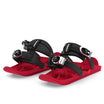
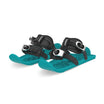












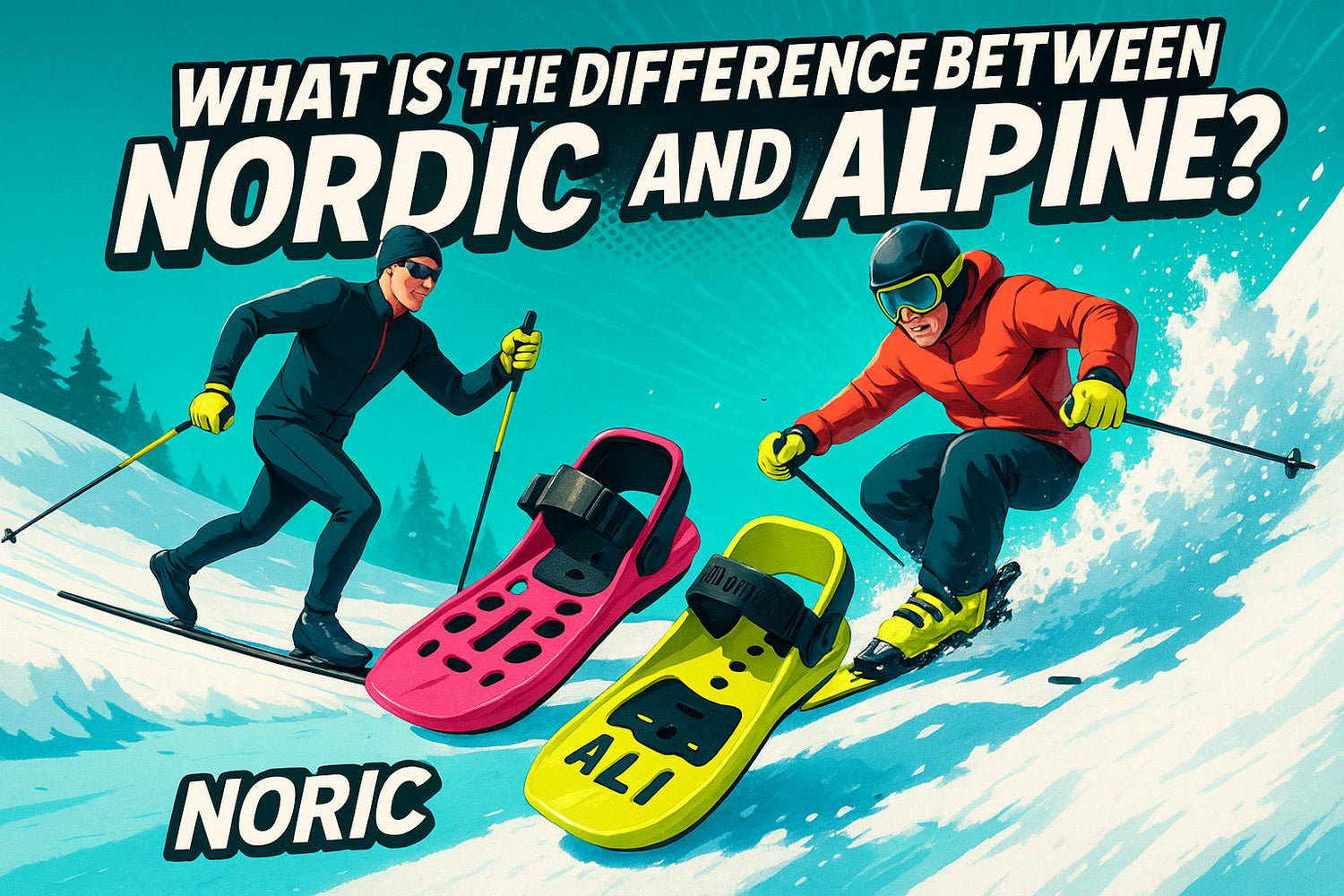
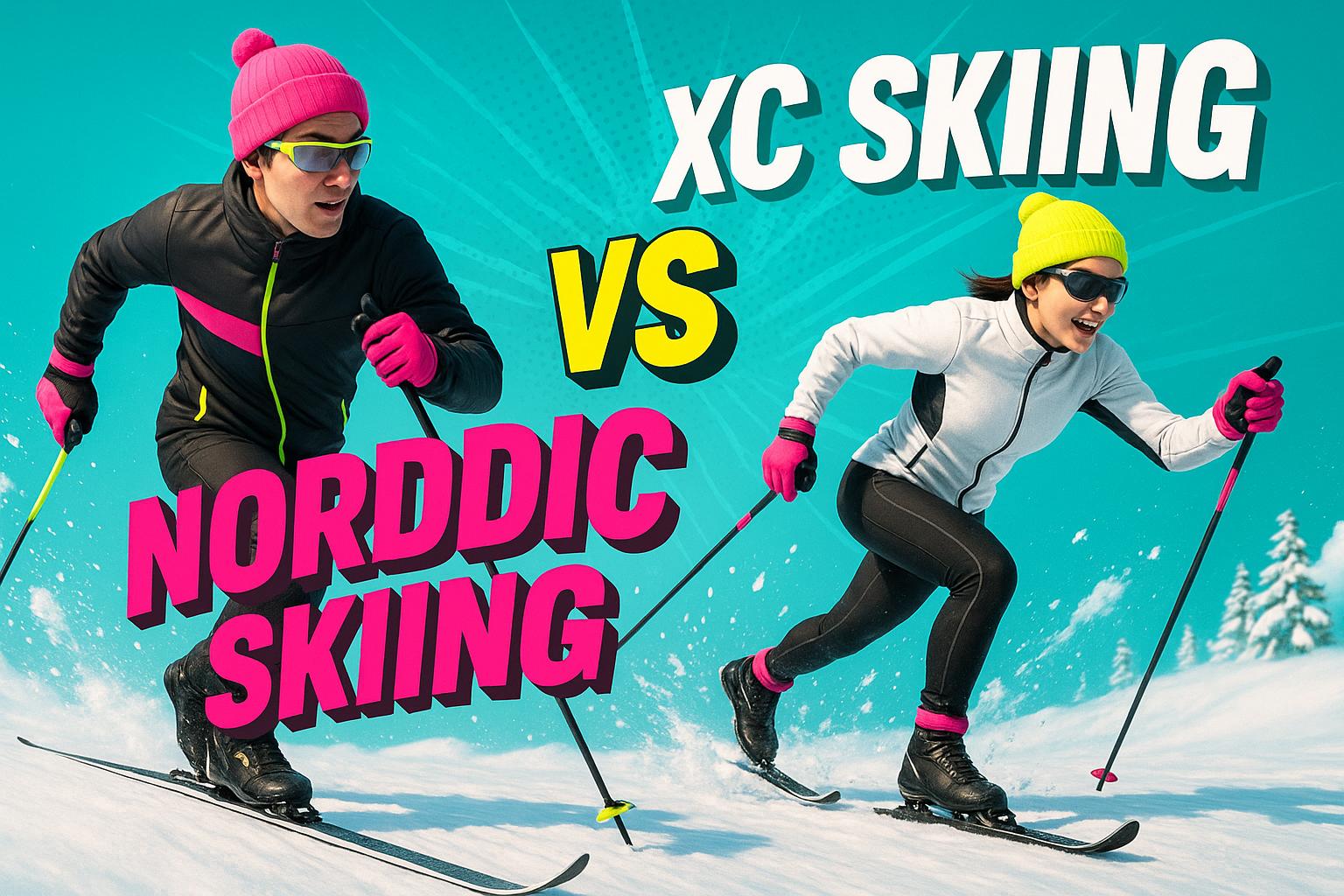
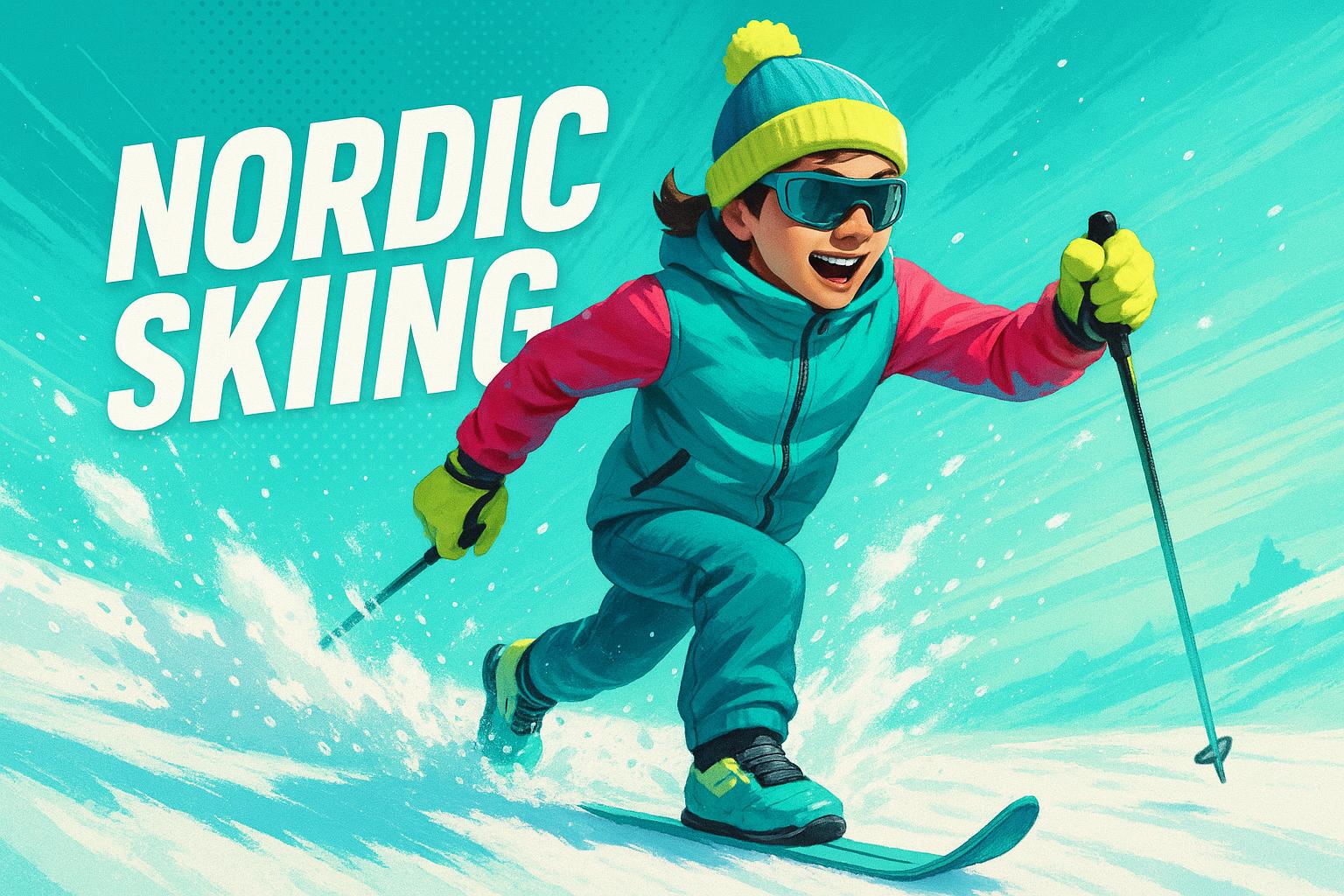




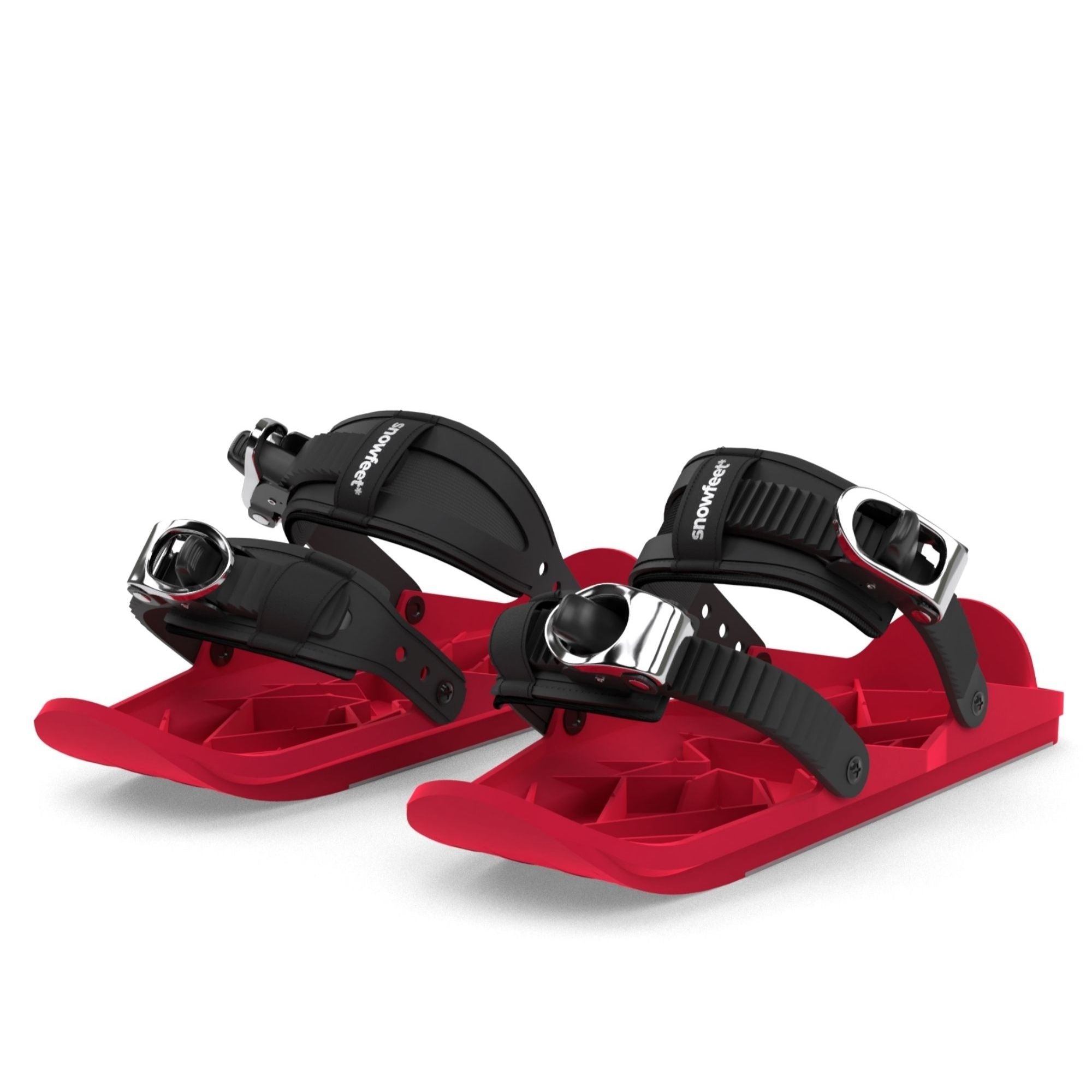
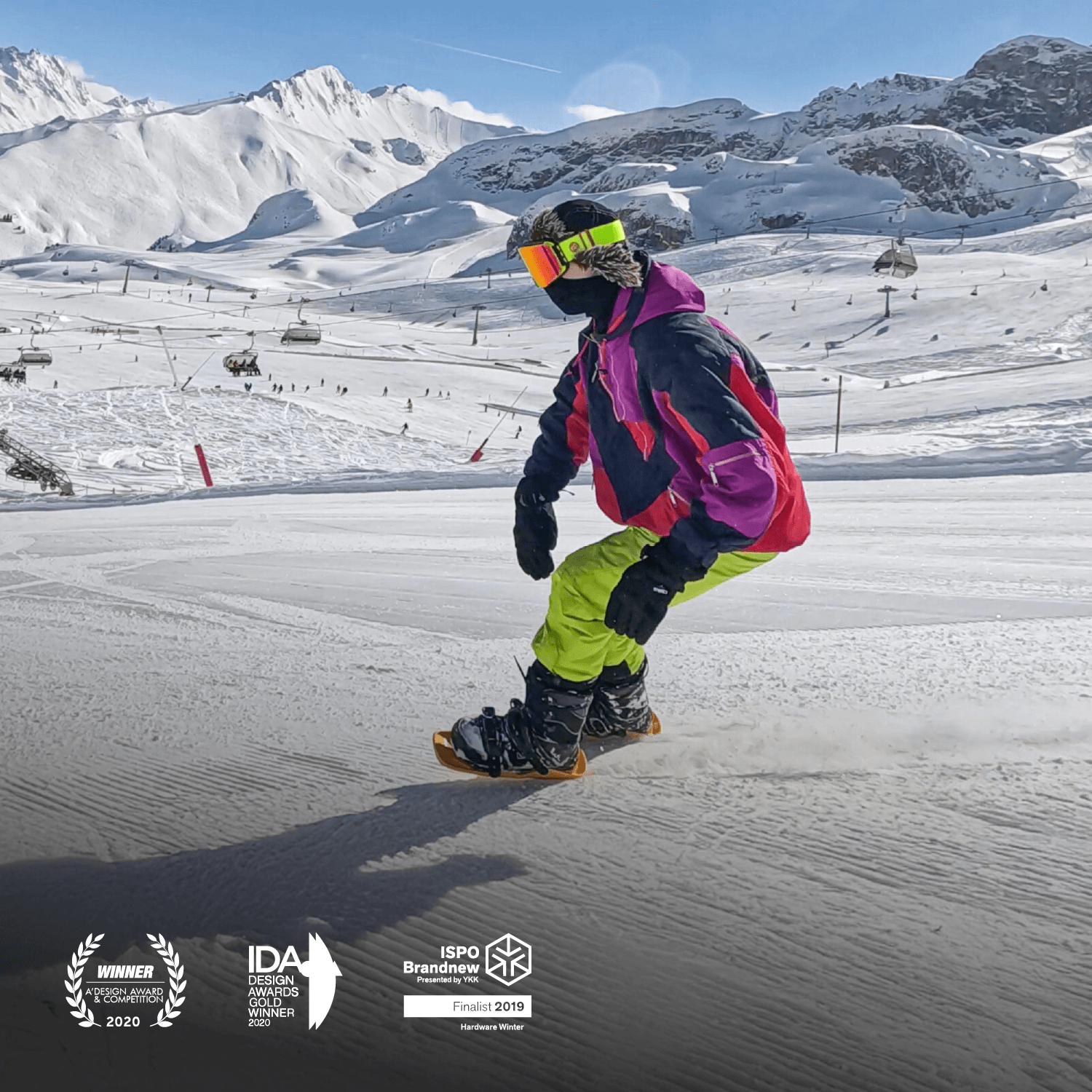




Legg igjen en kommentar
This site is protected by hCaptcha and the hCaptcha Privacy Policy and Terms of Service apply.